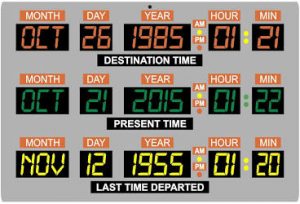The Roth IRA is a great investment vehicle. Not only do you earn tax free growth on your investments, you also avoid the headache of tracking your basis and earnings for tax reporting. I’ve maxed out mine and my spouses’ Roth IRA’s every year since 2010, except for 2014 (when we only contributed $3,500 each).
Contributing to a Roth IRA is nice, but you have to actually invest in stocks or mutual funds. to earn a return on your investment. Duh! There are millions of investments and strategies, including stocks, bonds, ETF’s, and mutual funds. I do not have the time or energy to research and invest in single stocks, so I invest via low cost, broad based funds. I look for funds that either track the market or have a positive long term track record, such as Vanguard Total Stock Market (VTSAX) and Vanguard’s Growth Index (VIGAX). I also have substantial holdings in a Target Retirement Fund, which automatically rebalances from stocks to bonds as retirement nears. These broad based market index funds cost of only 0.04% and 0.05%, respectively, compared to the 0.15% for the target retirement fund.
Since 2010, the broader market has had a tremendous run. For example, the S&P 500 index is up 167% and the Nasdaq is up 250% since 1/1/2010. With those gains, I expected a pull back and began to believe that I could time the market with a cheap entry point. Almost every investor will probably feel like they can sell now to buy cheaper later (aka time the market). Sometimes it might work, but trying to time the market is almost always a money loser. Here is my story of how timing the market cost my family substantial gains.

Selling to Buy Cheaper
Early in the pandemic, I moved a substantial portion of my Roth IRA to cash. I thought the market had run up too much too quick and the coming (as I thought) pull back would allow me to purchase at a lower level.
Specifically, I sold 586.52 shares of VTSAX at $71.79 on May 8, 2020, receiving total proceeds of $42, 106.27. As of August 13, 2021, a share of VTSAX is $111.98, so my 586.52 shares would have grown to $65,678.51. In short, I missed out of $23,572.24 of growth or 56% gain on my $42,106.27. I also sold 103.83 shares of VIGAX on April 17, 2020, at $90.88. These shares now trade approximately 69% higher only 14 months later.
Not only did I do this in my account, I did the same thing in my wife’s Roth IRA. Ugh!
Here is a spreadsheet showing all our sales in 2020. Note: this chart includes some sales prior to the pandemic but those were generally intended to consolidate holdings.
Together, our accounts have missed almost $60,000 of [paper] gain on just our major holdings of Vanguard mutual funds. Had we done nothing, our account balances would be about 33% higher. OUCH!
A year later, the major pullback still has not come. I sold shares expecting (hoping) for a pullback that never came, so not only did I miss out on substantial gains – I’m stuck without a good entry point. If I jump in entirely with all my cash and then the pullback comes – I don’t have any cash to take advantage of it. If I continue to hold cash, I’m missing out on substantial gains over what I’ve already missed (see above).
Capitulation.
Trying to time the market is dumb.
Realizing my mistake – I have since pulled the trigger on what I believe is the best option available: A systematic weekly/monthly investment in multiple low-cost Vanguard funds. I have not gone “all in” but initiated small weekly automatic investments into multiple index funds. This preserves some cash for a few years to take advantage of the major pullback but also gets us back into the market – by dollar-cost averaging.
Maybe I should go all-in and use my future contributions to dollar-cost average. However, I think if I do that, the market pullback will soon follow. Some research actually shows that going “all-in” may be a better long-term approach. I think I’ll probably increase our weekly investment amounts to push more cash into the market more quickly as a hybrid approach to going “all-in” at this point in the market cycle.
Lessons Learned.
I learned a very important set of lessons. Don’t ever think you can actually time the market. You might get lucky. But, the best long-term approach is to ignore the noise and just keep investing. Systematically.
Also, don’t fight the Fed and don’t sell anything. Ever.
